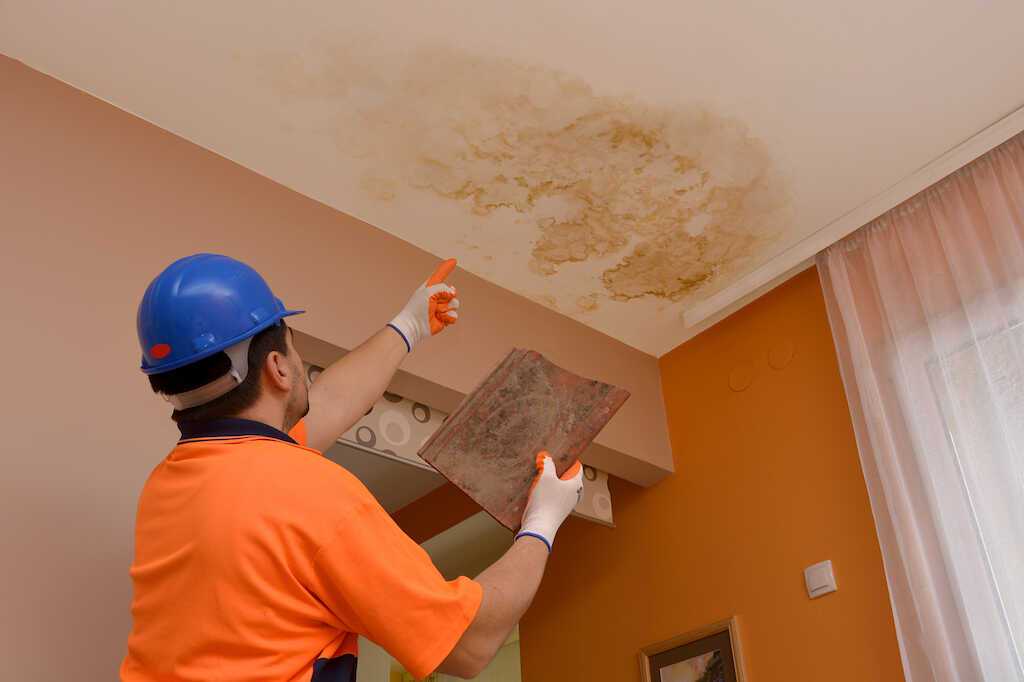Some roofs will last 20 years while others will last 100. Its lifespan will depend on what kind of material the roof is made from. While your roof might not need to get replaced for many years, that doesn\’t mean that it won\’t spring a leak.
Roof leak repairs are important. A variety of bad things could happen to your business if you let a leak go on for too long. But how can you tell that your roof has a leak?
Keep reading and learn more about what you should look for below.
Visible Damage to the Roof
The first and best way to check if your roof leaks is by checking the roof itself. The roof\’s membrane and other layers are what protect your roof from water. They help direct rain away from the inner layers of the roof.
The rain instead drains off the roof and through the gutters. This ensures that water doesn\’t pool on the roof or leak through it. But the roof will no longer do this if the upper layers are compromised.
Commercial roof layers are very sturdy and should stay in place for many years. But things like storms and flying debris can damage them. A few signs of damage might not seem like a big problem, but they can cause a leak in the roof.
This is because the rain will have more direct access to the inner layers of the roof. These inner layers are not as water resistant. They instead will absorb the water and bring it deeper into the roof where it will cause damage.
The Details
It might take some time for a true leak to form, but it will happen eventually. Go up to your roof and check if there are any signs of roof damage. Even if there are a few signs, they will become a problem.
If there are more than a few signs, then you have an even bigger problem. It is important to repair the damage right away. The longer the damage is present, the more likely it is for a leak to occur.
You should also look out for cracks. Small cracks in the roof can cause similar problems.
These cracks make it easy for water to pierce the roof and reach the deeper layers. Cracks are harder to see, but they are still just as damaging. If you don\’t know what to look for when inspecting your roof, you can call a professional to do it instead.
Water Stains on the Ceiling
Of all the signs of a leaking roof, the most obvious is water stains on the ceiling. A roof leak doesn\’t have to be dripping water into your business. The water might stay up in the ceiling, at least temporarily.
Suppose that your roof is missing shingles in one spot. When it rains, rain can seep through this vulnerable area and into the deeper layers of the roof. As the water pierces deeper, it will be easier for the water to keep traveling through the roof.
This is because water will lead to a damaged roof. The more damaged these inner layers are, the easier it is for a leak to form. As the water goes deeper into the roof, it will reach the ceiling inside your house.
This won\’t cause a stream of dripping water right away. It will instead soak into the ceiling and start to damage it.
What You Need to Know
Once the ceiling gets wet, it will be a breeding ground for bacteria, mold, fungi, and insects.
Water stains are very obvious. They look like yellow or brown stains on the ceiling. They start as small dots but they gradually spread until they become large swaths of water damage.
The worse the water stains get, the darker they become. And as they get worse, the ceiling will become much weaker. The drywall may feel spongy and soggy instead of firm as it\’s supposed to be.
You may also notice that mold is growing around these stains. Even a small spot of water damage on the ceiling is a sign that your roof has a leak. It is important to repair the roof leak before it gets any worse.
The next step of a leak is dripping water. Once the water starts dripping into the building, your problems will get more complicated. Puddles might start to form on the floor and cause further damage.
The water might soak into the floor\’s deeper layers or the building\’s foundation. It is best to stop the problem before this happens. This will save you time and money on repairs too.
Odor and Mold
If your ceiling doesn\’t have any signs of water damage but you suspect your roof leaks, check for odors and mold.
A healthy roof and ceiling should be dry without any signs of mold, water stains, or anything else. Notice if the air feels damp or musty.
Damp air is a sign that water has infiltrated the roof. If you see a water stain, this is a sure sign that the roof has a leak. Mold may have started to grow around the wet spot as well.
This will create a bad odor.
Catching a leak this early is good. You can keep it from getting any worse by calling a roof repair professional.
All About Roof Leak Repairs
Roof leak repairs are important for keeping your roof in good shape. If your roof springs a leak, a variety of bad things could happen. Mold might start growing in your business, the ceiling might become unstable, and so on.
A roofing professional can help you. To learn more about how it works, check out our services.

